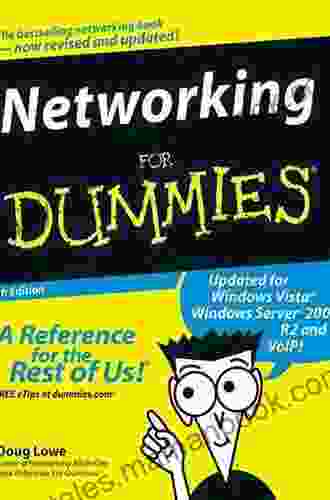A Comprehensive History of the International Monetary System: Third Edition

The international monetary system (IMS) is a complex and ever-evolving set of rules, institutions, and practices that govern the exchange of currencies between countries. It has a long and fascinating history, dating back to the earliest days of trade and commerce. In this article, we will explore the key events and developments that have shaped the IMS over the centuries, from the gold standard to the present day.
4.5 out of 5
| Language | : | English |
| File size | : | 7559 KB |
| Text-to-Speech | : | Enabled |
| Screen Reader | : | Supported |
| Enhanced typesetting | : | Enabled |
| Word Wise | : | Enabled |
| Print length | : | 315 pages |
The Gold Standard
The gold standard was the dominant international monetary system from the mid-19th century until the outbreak of World War I. Under this system, the value of currencies was pegged to the price of gold. This meant that countries could only issue as much currency as they had gold reserves to back it up. The gold standard was seen as a way to maintain price stability and prevent inflation.
The gold standard was not without its critics. Some argued that it was too inflexible and prevented countries from responding to economic shocks. Others argued that it was unfair to countries that did not have large gold reserves. Despite these criticisms, the gold standard remained in place for decades.
Bretton Woods
The Bretton Woods conference was held in 1944 in response to the economic chaos caused by World War II. The conference established the International Monetary Fund (IMF) and the World Bank, two institutions that would play a major role in the postwar international monetary system.
The Bretton Woods system was based on a modified gold standard. Currencies were pegged to the US dollar, which was in turn pegged to gold. This system helped to stabilize the global economy and promote economic growth.
The Collapse of Bretton Woods
The Bretton Woods system began to unravel in the late 1960s. The US dollar came under increasing pressure as the US ran large budget deficits. In 1971, President Richard Nixon announced that the US would no longer peg the dollar to gold. This marked the end of the Bretton Woods system.
Floating Exchange Rates
The collapse of Bretton Woods led to a period of floating exchange rates. Under this system, the value of currencies is determined by supply and demand in the foreign exchange market. Floating exchange rates are more flexible than fixed exchange rates, but they can also be more volatile.
The Current International Monetary System
The current international monetary system is a hybrid system that combines elements of both fixed and floating exchange rates. Some countries, such as China, have pegged their currencies to the US dollar. Other countries, such as the United States and Japan, have floating exchange rates.
The current IMS is still evolving. It is likely that we will see further changes in the years to come as the global economy continues to change.
The history of the international monetary system is a complex and fascinating one. It is a story of how countries have worked together to create a system that facilitates trade and commerce. The IMS has not always been perfect, but it has played a vital role in the development of the global economy.
4.5 out of 5
| Language | : | English |
| File size | : | 7559 KB |
| Text-to-Speech | : | Enabled |
| Screen Reader | : | Supported |
| Enhanced typesetting | : | Enabled |
| Word Wise | : | Enabled |
| Print length | : | 315 pages |
Do you want to contribute by writing guest posts on this blog?
Please contact us and send us a resume of previous articles that you have written.
 Top Book
Top Book Novel
Novel Fiction
Fiction Nonfiction
Nonfiction Literature
Literature Paperback
Paperback Hardcover
Hardcover E-book
E-book Audiobook
Audiobook Bestseller
Bestseller Classic
Classic Mystery
Mystery Thriller
Thriller Romance
Romance Fantasy
Fantasy Science Fiction
Science Fiction Biography
Biography Memoir
Memoir Autobiography
Autobiography Poetry
Poetry Drama
Drama Historical Fiction
Historical Fiction Self-help
Self-help Young Adult
Young Adult Childrens Books
Childrens Books Graphic Novel
Graphic Novel Anthology
Anthology Series
Series Encyclopedia
Encyclopedia Reference
Reference Guidebook
Guidebook Textbook
Textbook Workbook
Workbook Journal
Journal Diary
Diary Manuscript
Manuscript Folio
Folio Pulp Fiction
Pulp Fiction Short Stories
Short Stories Fairy Tales
Fairy Tales Fables
Fables Mythology
Mythology Philosophy
Philosophy Religion
Religion Spirituality
Spirituality Essays
Essays Critique
Critique Commentary
Commentary Glossary
Glossary Bibliography
Bibliography Index
Index Table of Contents
Table of Contents Preface
Preface Introduction
Introduction Foreword
Foreword Afterword
Afterword Appendices
Appendices Annotations
Annotations Footnotes
Footnotes Epilogue
Epilogue Prologue
Prologue Shoshana Vegh
Shoshana Vegh Wil Adams
Wil Adams Symeon Waller
Symeon Waller Ernest Stambouly
Ernest Stambouly Royal Yarns
Royal Yarns The Secret Midwife
The Secret Midwife Merlin Mill
Merlin Mill Nancy Sack
Nancy Sack Eric Foster
Eric Foster Barbara Kamler
Barbara Kamler Michael Alexander
Michael Alexander Leslie Marlow
Leslie Marlow Yrsa Daley Ward
Yrsa Daley Ward Jodi Ann Fahey
Jodi Ann Fahey Sharon Olds
Sharon Olds Marguerite Roza
Marguerite Roza Geoffrey W Bakewell
Geoffrey W Bakewell Adrienne Basso
Adrienne Basso Kathryn Harkup
Kathryn Harkup David Bohlke
David Bohlke
Light bulbAdvertise smarter! Our strategic ad space ensures maximum exposure. Reserve your spot today!

 Kyle PowellAdmission Requirements for Phoebe Wang High School: A Comprehensive Guide for...
Kyle PowellAdmission Requirements for Phoebe Wang High School: A Comprehensive Guide for...
 Leslie CarterEquipping Your Future With Wisdom From The Past: Unlocking the Treasures of...
Leslie CarterEquipping Your Future With Wisdom From The Past: Unlocking the Treasures of... Henry David ThoreauFollow ·7.2k
Henry David ThoreauFollow ·7.2k Harry HayesFollow ·6.9k
Harry HayesFollow ·6.9k Asher BellFollow ·2.3k
Asher BellFollow ·2.3k Noah BlairFollow ·3.4k
Noah BlairFollow ·3.4k Jamie BlairFollow ·10.2k
Jamie BlairFollow ·10.2k Israel BellFollow ·11.9k
Israel BellFollow ·11.9k Edward ReedFollow ·15.2k
Edward ReedFollow ·15.2k Oscar BellFollow ·15.9k
Oscar BellFollow ·15.9k

 Edwin Cox
Edwin CoxThe Great Deliverance Inspector Lynley: A Literary...
: In the realm of detective fiction,...

 Christian Carter
Christian CarterMetal Gear Solid Ground Zeroes Guide, Walkthrough, Tips,...
Metal Gear Solid...

 Branden Simmons
Branden SimmonsYellow Green: Not an Autobiography of Marcy Chen
Yellow Green:...

 Edward Reed
Edward ReedPurple Orchids: An Artistic Tale of Two Sisters in the...
Prologue: A Legacy Unveiled In the...

 Earl Williams
Earl WilliamsThe Evolving Housing Market Dynamics in Africa:...
The African housing market is a...

 William Faulkner
William FaulknerVoices In My Head: A Cerebral Symphony of Terror
In the labyrinthine...
4.5 out of 5
| Language | : | English |
| File size | : | 7559 KB |
| Text-to-Speech | : | Enabled |
| Screen Reader | : | Supported |
| Enhanced typesetting | : | Enabled |
| Word Wise | : | Enabled |
| Print length | : | 315 pages |








